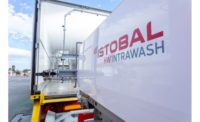Warehouse compliance to the Food Safety Modernization Act

I recently had a warehouse manager mention that it had been twelve years since an FDA inspection. Then, one happened, and many food safety gaps were noted. The lesson here is don’t wait for a local, state or federal inspector or contract customer’s auditor to show up and tell you the basics of what you should be doing. It is expected that the basics are known and should be in place prior to conducting business. The Food Safety Modernization Act (FSMA) I trust, will not catch you unexpectedly as it received great notoriety. While FDA field inspectors may not be concentrating on food warehouses to enforce this relatively new law, don’t wait for one to show up and point out gaps in compliance, issue warning letters and put your warehouse on a more frequent inspection schedule. Don’t forget, any regulatory inspector could show up unannounced based on a consumer or competitor’s complaint. Let’s begin the FSMA journey.
The Food Safety Modernization Act (FSMA) was enacted on January 4, 2011. While it took several years for the Food and Drug Administration (FDA) to train its personnel, roll out and implement FSMA, for the most part it is now in place. Are facilities (e.g. warehouses) that receive, store and distribute human and animal food products required to be part of FSMA? In most cases, the short answer is “yes.” How would you know? The longer answer is, in general, the facility is covered if it is required to register with the FDA under section 415 of the Federal Food, Drug and Cosmetic (FD&C) Act. FSMA amended section 415 as parts of this section you may remember as the Bioterrorism Act (Public Health Security and Bioterrorism Preparedness and Response Act of 2002). This act requires domestic and foreign facilities that manufacture, process, pack or hold food for human or animal consumption in the U.S. must register with the FDA. Warehouses that handle foods requiring refrigeration or things like fresh fruits and vegetables that are exposed to the warehouse environment definitely fall into the requirement for FDA registration. Almost all warehouses handling food have to meet at least some of the requirements under the FSMA law and are subject to FDA inspections.
A bit more history: you may have already known that a human or animal food warehouse could be inspected by FDA and that’s true. FSMA did not “add” this. FSMA did update the current Good Manufacturing Practices (cGMP’s) though and made many provisions that were nonbinding, such as education and training, binding. There is also a law in Title 21CFR (Code of Federal Regulations) Chapter 9, section 342 a (3) and (4) which states that food is adulterated…if it has been prepared, packed or held under conditions whereby it is contaminated or may have been contaminated with filth or whereby it may have been rendered injurious to health (www.uscode.house.gov).
Now you know that if you receive, store and distribute human or animal food, there are many laws that allow the FDA to inspect your facility. You need to be inspection-prepared 24 hours a day. While they, the FDA, normally try and do an inspection “during regular business hours,” if the site is a 24 hour a day operation, an inspection could occur at an unusual time.
It is important to remember that FSMA’s primary focus is food safety prevention. Preventive, not reactive programs should be designed/implemented. Documentation of such programs/tasks is essential and critical as if it’s lacking, any good inspector assumes it has not been done! Documentation “on paper” and proper implementation “on the floor” is what the FDA will be looking for.
Let’s see how FSMA may affect your warehouse operations and some of the key areas to focus on when asked the question “Are you FSMA compliant?”.
- Education and training. Personnel are now required to have this under FSMA. Management is required to ensure that all employees who manufacture, process, pack or hold food are qualified to perform their assigned duties. “How so” you may ask? Such employees must have the necessary combination of education, training and/or experience necessary to handle food to maintain its cleanliness and safety. Individuals must also receive training in the basics of food hygiene and safety. This includes the importance of employee health and hygiene as appropriate to the food, the facility and the employee’s assigned duties. Such training can be done by in-house experts or from an external vendor. In either case, trainers must have shown that they have the experience and knowledge to successfully perform the training. This can be from education and/or on the job experience.
- Allergens. FSMA has also codified the FDA’s longstanding position that cGMP’s address allergen cross-contact be explicit in the regulatory text. For warehouses, allergen items received should be clearly identified (e.g. words and/or color tags) in a manner that ensures all employees can read and understand the wording and/or the color code identifying specific allergens. Allergen items should be stored in a separate and segregated area away from non-allergen products and at the floor level. The same allergens can be stored above each other. Different allergens cannot be as if package damage and spillage occur, you will cross-contaminate different allergen products in the space. Personnel must be trained to quickly identify and remove allergen spillage and inspect the areas to ensure no products have been cross-contaminated. A best practice procedure is to have allergen specific and designated sanitation tools. These can be labeled or color coded so all personnel understand the designation. The facility should also have written standard operating procedures (SOP’s) on allergen handling to ensure incoming products are properly labeled and cross-contamination is not an issue.
- The cGMP’s. They now include a provision for holding and distribution of human food by-products that are used for animal food. If such a practice is part of your warehouse operations, you must ensure the foods are clearly labeled, received and handled in such a manner that protects them from physical (e.g. wood, paint, glass, metal), chemical (e.g. allergens, pesticides, soaps, sanitizers) and biological hazards (e.g. microbial pathogens, pests).
- Food safety plan. Even though a warehouse only receives and distributes human or animal foods and does not manufacture them, FSMA covered (see 21 CFR 117 Subpart C) facilities are required to have a written food safety plan that includes the following. Even if your site may not be technically covered by FSMA, it is a best practice to be aware of and follow these below.
- Hazard analysis. We mentioned the physical, chemical and biological hazards. You must ensure that products received, stored and re-distributed back into the supply chain are maintained in a manner to prevent hazard contamination. Before receiving “new” products into the facility, have a conversation with the responsible party to be sure their products have gone through a hazard analysis, hazards identified, and then have written preventive procedures in place to keep them out. Once under your roof, your operations should do the same. Have these same procedures in place to ensure products received, stored or shipped have not had hazards re-introduced while in your warehouse.
- Preventive controls. Warehouses have the flexibility to tailor these to address the hazards products under storage may be exposed to. Preventive controls must be written and implemented in a manner to ensure hazards are significantly minimized or prevented to ensure product adulteration does not occur.
What are some examples of preventive controls?
- Process controls: in a warehouse, temperature control of coolers or freezers comes to mind as this is critical to keeping the products safe. Temperature controlled areas should have written procedure in place to ensure temperatures are checked/documented during the day (e.g. temperature chart recorders) and procedures in place (e.g. alarms, security monitoring) should equipment malfunction.
- Food allergen controls: previously covered but to summarize, written program with supporting SOP’s must be in place to ensure any products with allergens are handled in such a manner to prevent product cross-contamination.
- Sanitation controls: are procedures, practices and processes to ensure the facility is maintained in a sanitary condition to minimize or prevent hazards such as environmental pathogens (e.g. Salmonella, Listeria), hazards from employees handling products (e.g. open sores or sickness) and food allergen hazards. A Master Cleaning Schedule (MCS) is an example in this area. An MCS lists the other than daily cleaning tasks and cleaning frequency (e.g. weekly, monthly, quarterly). Be sure exterior areas around the warehouse are listed on the MCS for attention. When the task is completed, employees initial and date the MCS. Another example would be if sanitizers are used, written SOP’s should be in place to ensure it is checked/noted for proper part per million (ppm) concentration before each use. Label directions must be followed. Trash or waste containers should be labeled and/or color coded. If appropriate, floor drains should be on the MCS and separate and designated by label or color code equipment should be used. For example, black is a common color code for floor drain cleaning brushes. Red is a common color code for waste container cleaning equipment.
- Other controls: these are examples of prerequisite programs (PRP’s) that you may be familiar with in food manufacturing plants. In a warehouse, such programs would focus on the environment, people or facility.
Examples and ways to accomplish include:
- Pest control. Whether done in-house or by an external vendor, programs must be documented with pest prevention in mind. Documents such as insurance, licenses, schematic location maps of insect lights, rodent traps or insect pheromone traps, pest catch logs, pest device check logs and pesticide usage logs must be kept current. Integrated pest management (IPM) techniques and inspections must be done to help ensure pest prevention occurs. On a regular basis, interior, exterior or roof areas (safety first) should be inspected for pest harborages. Exterior perimeters should be kept clean and an 18-24-inch vegetation free barrier should be in place next to the foundation. Exterior waste container areas should be routinely cleaned/inspected and an IPM program used to prevent pests (e.g. insects, rodents, birds).
- Chemical control. Are chemicals stored in properly labeled, secured and segregated areas to prevent product contamination? Material safety data sheets (MSD’s) need to be available and current. Have employees handling chemicals undergone proper and documented chemical handling/use training?
- Employee training/practices. Eating, drinking or smoking is done in designated areas only. Restroom are maintained in a sanitary manner. “Hand Wash” signs are posted in rest rooms to remind employees to properly wash their hands before returning to work. Sick employees or employees with open wounds are not allowed to handle products. Doors and windows are kept closed or properly screened to keep pests out if kept open for air movement. Uniforms, gloves or similar are maintained in a sanitary manner. Spillage is removed ASAP and aisles/storage racks once emptied, are deep cleaned before re-stocking. For dry warehouse environments, vacuums can be more efficient than brooms in removing dust and small sized debris.
- Transportation. Documented inspections for physical, chemical or biological hazards must be done on all trailers/products received and on these same items when re-shipped out. Trailers/products are inspected for cleanliness, foreign material, odors or pests. All work is documented. Exterior dock areas and under dock levelers are inspected weekly for cleanliness and gaps that may allow the entry of pests.
- Foreign material control. Roofs prevent leaks, overhead lights have shatter-resistant bulbs or shields and placed where breakage risk is very low. Construction or maintenance materials need to be stored so they do not contaminate products.
- Trace/Recall. All warehouses handling foods need to have their own traceability and recall programs. These programs are usually designed at the place of manufacture and at the warehouse. Customer guidance and requirements may drive a warehouse’s trace/recall program. At a minimum, the program should be tested annually at the warehouse using their system. This program must be documented to describe the procedures to perform a product recall. It must include procedures to notify consignees, to notify the public or customer when needed, to conduct effectiveness checks and include the appropriate disposal of “recalled product.”
All products received into the warehouse must be legibly “coded” in an agreed upon manner between vendor and receiver. Such a code is documented at receipt or changed (e.g. warehouse bar code system), entered into the computer tracking system, stored in a first-in-first-out (FIFO) manner and similarly documented for outbound shipment. A “one step back, one step forward” trace/recall scheme is usually required. - Maintenance. Any work or employee maintenance tasks need to be done in a manner to prevent product contamination. It’s a good practice to have a documented inspection after any maintenance work is done to ensure the area/products in the affected area have been properly protected from contamination.
- Security. All warehouses must have a security policy and make all practical efforts to secure outside perimeters and doors from unauthorized personnel entry. They should have a designated visitor entrance, require proper ID and have a visitor logbook signed to record this. Contractors should have a similar policy. Any visitor should receive minimum training in following the warehouse’s food safety/protection programs (e.g. GMP’s) and be accompanied at all times is a best practice. Employees must be aware of the risk of “intentional adulteration” whereby product is intentionally contaminated with a physical, chemical or biological hazard and control visitors at the site. While most foods in storage are protected by external packaging, employees should still monitor products for signs of tampering and immediately report this to their supervisor. Foods with no external packaging protection (e.g. raw vegetables, produce) should be closely monitored.
There are still a few terms and programs you should be consider including in your food safety compliance program. Many are focused on food/feed manufacturing facilities but may have merit in a warehouse distribution operation. For example:
-
Oversight and management of preventive controls: Once a facility had identified a preventive control for a hazard, the facility must make sure the control(s) are being met. Using temperature control in a warehouse as an example, the following process should occur:
a. Monitoring: SOP’s need to be implemented to assure the temperature control consistently performs. Monitoring is conducted as appropriate for the preventive control. 24-hour chart recorders are typically used to monitor critical temperature ranges. Monitoring must be documented by such charts or hand-written logs. The chart accomplishes this, but I recommend at least a daily check where a qualified employee checks the chart and initials it at the time of check. A 24-hour alarm/notification system is required, should equipment malfunction occur.
b. Corrections: These are steps taken, in a timely manner, to identify and correct a minor, isolated problem that occurs.
c. Corrective actions: These include actions taken to identify and correct a problem implementing a preventive control, reduce the likelihood the problem will recur, evaluate affected food for safety, and prevent that food from entering commerce if you cannot ensure that the affected food is not adulterated. Corrective actions must be documented. In our example, the recording chart pen runs out of ink. It’s replaced and noted on the chart with employee initial. No alarms sounded so the temperature must have been within the needed range so the product did not become adulterated from being stored too warm.
d. Verification: These activities are required to ensure that preventive controls are consistently implemented and effective in minimizing hazards. Activities must be documented. To “verify” our example, one may have a qualified and trained individual with a calibrated and certified reference thermometer check the chart recorder’s readings to verify the chart temperature readings and the chart machine/alarms are working properly. This should be done, at a minimum, annually.
- Supply chain program: In a warehouse operation, I recommend that you “know your suppliers.” This means to have a risk-based discussion on what type of product they are sending to you, does it have a need for preventive control(s) (e.g. allergen call out and proper labeling) and is the control being properly applied at manufacturing? Food suppliers as well as the food warehouse also must be controlling other physical, chemical or biological hazards. This can be accomplished by using magnets, metal detectors, sifters, strainers or filters, an approved thermal process, environmental monitoring for pathogens, effective pest control, temperature control, protective packaging, bar code scanning for proper labels or other validated and effectively monitored food safety “kill” steps.
While any product is stored within your warehouse operations, you must also carry-through these preventive controls/processes mentioned to ensure it is re-distributed in the same unadulterated manner.
In summary, know the expectations and food safety requirements needed to protect food products stored from adulteration. FSMA is but one piece of the food safety puzzle. Know your suppliers/vendors, become active in relevant professional organizations to network and stay “current” on industry changes. Read subject matter periodicals. Food safety is non-stop as we’re all consumers and expect the products we buy to be safe!
Looking for a reprint of this article?
From high-res PDFs to custom plaques, order your copy today!






